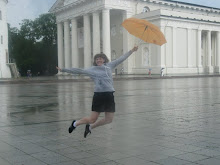On this assignment, I explored the wiki website Classroom 2.0. This site provides descriptions and discussions of various technology tools that can be useful in the classroom. I decided to explore the tool Google Earth, and the discussions that took place on the Classroom 2.0 wiki.
Google Earth is a free program provided by Google which provides basically a “virtual globe,” on which you can view clear satellite images of the Earth. You can view satellite images of everything on the earth from maps, to terrain, to 3D buildings, to galaxies in outer space, to national monuments, and even your own house! Within the program, you can also measure distances, add placemarks, photos, and notes about various geographical locations.
From the two discussion threads on Classroom 2.0, I have read about various ways that this program can be used in the classroom. The posts seem to agree that Google Earth is an excellent resource that the students really enjoy using. I think it allows the lessons to become more real and interactive, especially when they can view crystal clear images of everything from the Eiffel Tower, to the White House, to your own school. I have also learned particularly about the cross-curricular uses of Google Earth. One teacher used Google Earth to plot historic typhoons that had hit their island. In this project, the students were using math to create graphs of historic events. Google Earth can also be a fun interactive too to teach longitude and latitude coordinates. One cool website they mentioned is “Google Lit trips” (http://www.googlelittrips.com/), where the students find the locations that the stories take place on Google Earth. It can also add immensely to history lessons, such as mapping the battlefields. Whenever you want students to put into perspective location, distance, or movements, Google Earth is an excellent resource!
Subscribe to:
Post Comments (Atom)


Thanks for sharing Erin! You did a great job of describing this tool and its implications for education. Thanks!
ReplyDelete